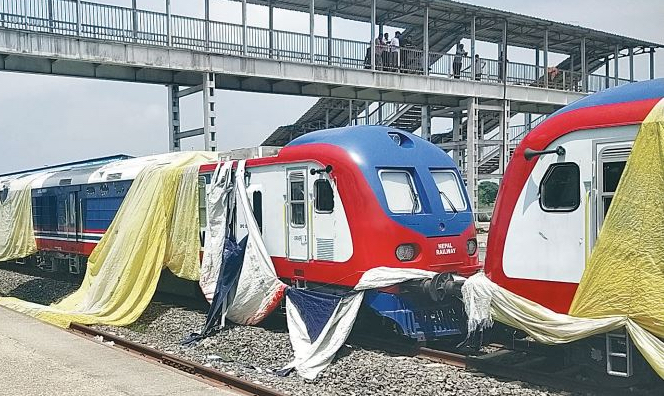China and Nepal have agreed to study and possibly build a cross-border rail line as part of China’s Belt and Road Initiative, Beijing said on Friday.
The ‘Trans-Himalayan Multi-Dimensional Connectivity Network’ was agreed following a meeting between the two countries’ foreign ministers, the Chinese foreign ministry said.
As part of the agreement, Foreign Minister Wang Yi said China would use aid funds to pay for a feasibility study of a China-Nepal cross-border railway and send experts to Nepal to conduct surveys this year, Foreign Ministry spokesperson Wang Wenbin said at a regular media briefing in Beijing on Thursday.
The network has been proposed under China’s Belt and Road Initiative and would involve the building of railway, consisting of a long sections of bridges and tunnels, as well as communication links.
“The link would enable Nepal-origin products to readily access China’s huge market and facilitate bilateral investment and trade flows, regional affairs observer Long Xingchun, president of the Chengdu Institute of World Affairs, was quoted as telling the Global Times.
The state media outlet suggested the cross-border link could be “a significant part of a rail network spanning China, Nepal and India if regional integration makes good progress.”
However, it noted that a rail line across the Himalayas would be a significant technical challenge – because “there would be a section of less than 200 kilometers with a drop height of over 1,000 metres. That means that it needs to solve many technical difficulties such as complex geological conditions and frequent natural disasters along the way,” the report said.
“According to preliminary calculations, the bridge-to-tunnel ratio of the entire railway exceeds 90%, and the construction cost per kilometre is about 200 million yuan (nearly $30 million).”
The cost of a 72km rail link from Nepal to the Chinese border was put at $2.7 billion to $5.5 billion, a report in 2019 said.
Modern Indian Trains Sit Unused
Political leaders in Nepal such as former prime minister KP Sharma Cli have often promised to upgrade rail links to India and China, but those vows have been stymied by red tape and political wrangling, according to local media reports.
Modern trains delivered by India in 2021 have sat idle for the past year because Nepal had no law allowing trains to operate, The Kathmandu Post said on Friday. And currently there is no minister of Physical Infrastructure and Transport to oversee the Department of Railways.
“Without laws, we cannot operate the trains,” Niranjan Jha, general manager at Nepal Railway Company, was quoted as saying. “There is uncertainty now.”
Election in November
Meanwhile, Nepal‘s government said on August 4 it will hold a parliamentary election in November amid concern over high inflation and depleted foreign exchange reserves that have led to rising food and energy prices.
Education Minister Debendra Paudel confirmed that a cabinet meeting approved November 20 for the election to the 275-member House of Representatives – 165 seats on first-past-the-post basis and the rest through proportional representation.
An alliance of communists including former Maoist rebels and the centrist Nepali Congress party of Prime Minister Sher Bahadur Deuba has held power since July last year. Former Prime Minister KP Sharma Oli’s Communist UML party, considered closer to Beijing, is the main opposition.
‘No Need for IMF Loan’
Meanwhile, Nepal’s financial situation is delicate. However, the central bank governor said recently they see no need to approach the International Monetary Fund (IMF) for a fresh loan as pressure on foreign exchange reserves is easing after a pick up in tourism.
“At present, our focus is on managing demand to reduce pressure on foreign (exchange) reserves,” Maha Prasad Adhikari, governor of the Nepal Rastra Bank said, noting that rising workers’ remittances and tourist arrivals offered a “silver lining” for the economy.
Tourism earnings increased more than three times to 25.5 billion Nepali rupees ($202 million) in the 11 months to end mid-June, compared with the same period a year earlier, though they are still well below pre-pandemic levels.
- Reuters with reporting and editing by Jim Pollard
ALSO SEE:
China and Nepal to Look at Himalayan Power Grid Link
China’s Belt & Road Project ‘Facing Mounting Opposition and Debts’
Beware Poisoned Gifts to Nepal From China
























